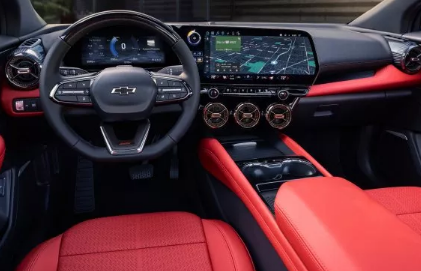Your location:Home >Automotive News >
Time:2022-07-12 15:10:55Source:
Gasgoo Automotive News Na-ion batteries with long cycle life and abundant sodium reserves are expected to become an alternative to current energy storage systems in the future.However, Na-based batteries tend to be less stable than Li-based batteries due to the instability of the solid electrolyte interface (SEI).SEI is a passivation layer formed on the electrode surface during the battery charge and discharge process.

(Image credit: PNNL)
Previous studies have shown that the dissolution rate of SEI is faster in sodium-ion batteries with high-voltage cathodes than in lithium-ion batteries.This causes a series of side reactions that rapidly deplete the electrolyte and cause irreversible capacity loss, which greatly affects the stability and performance of Na-ion batteries.
Recently, researchers at Pacific Northwest National Laboratory (PNNL) have developed a new electrolyte that can reduce the solubility of SEI on the negative electrode of sodium-ion batteries, while also forming a stable protective layer to protect the positive electrode,media reported. .Using this electrolyte could help to develop stable and reliable high-voltage sodium-ion batteries.
"This new electrolyte can stabilize the anode in high-voltage (4.2V) sodium-ion batteries and extend the battery's cycle life," said researcher Ji-Guang Zhang. "Using existing electrolytes at voltages higher than 4V tends to Leads to shorter battery life. The main goal of this research is to allow sodium-ion batteries to operate at higher voltages and increase the energy density of the batteries."
The new electrolyte can inhibit the dissolution of the negative protective layer.This electrolyte consists of the more stable salt sodium bisfluorosulfonimide (NaFSI) and a solvent with a lower dielectric constant.With conventional electrolytes, a protective layer that is rich in organic components and readily dissolves is formed.In contrast, the new electrolyte forms a protective layer rich in inorganic components and is therefore more stable during cycling and storage.
The researchers tested this electrolyte in HC||NaNMC all-cells and achieved remarkable results.Especially when charged to 4.2 V, the battery can maintain more than 90% capacity after 300 cycles.These findings suggest that this electrolyte could contribute to the development of more stable and better performing sodium-based energy storage solutions.
"This can successfully reduce the solubility of the anode protective layer, enabling long-term operation of the high-voltage sodium-ion battery," Zhang said. In the next step, the researchers plan to further improve the operating voltage of the sodium-based battery and prolong the battery cycle life.
Statement: the article only represents the views of the original author and does not represent the position of this website; If there is infringement or violation, you can directly feed back to this website, and we will modify or delete it.
Preferredproduct
Picture and textrecommendation

2022-08-04 12:57:12

2022-08-04 12:56:48

2022-08-04 12:56:28

2022-08-04 12:56:04

2022-08-04 12:55:36

2022-08-04 12:55:11
Hot spotsranking
Wonderfularticles

2022-08-04 12:54:48

2022-08-04 12:54:20

2022-08-04 12:53:54

2022-08-04 12:53:32

2022-08-04 12:53:03

2022-08-04 12:52:26
Popularrecommendations
